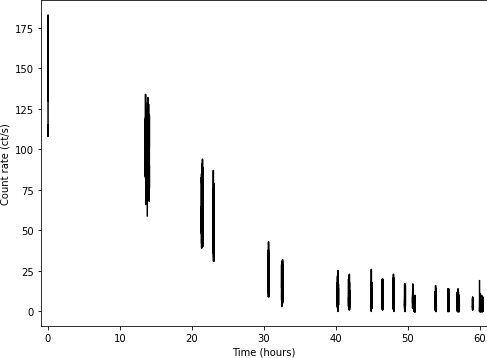NICER / ISS Science Nugget
for June 23, 2022
NICER discovers its 2nd accreting millisecond pulsar in two weeks
The low-mass X-ray binary system MAXI J1957+032 is a peculiar X-ray transient. First discovered in 2015 by JAXA's MAXI payload, this episodic X-ray source showed four distinct outbursts during 2015 and 2016; each outburst, lasting approximately four days, was both faint and short-lived. After some additional activity in late September 2019, the system had not been seen again.
On June 19, MAXI reported new X-ray emission from the direction of MAXI J1957+032. Rapid follow-up with NICER to scan the MAXI localization region enabled triangulation of the transient's sky coordinates, confirming that it was indeed MAXI J1957+032 that had again become active. Pointing directly at MAXI J1957, NICER immediately revealed that the enigmatic transient is in fact a 314 Hz pulsar - i.e., a neutron star that revolves every 3.185 milliseconds and draws matter from a low-mass companion star. This follows NICER's recent MAXI-initiated discovery of another accreting millisecond pulsar, MAXI J1816-195, as reported last week.
Using the detected pulsations from MAXI J1957, NICER uncovered the pulsar's 1-hour orbital period; MAXI J1957 is thus a rare "ultracompact" binary, making it more interesting even than previously held. The orbit measurement enables an investigation into the nature of the companion "donor" star, valuable information for understanding how and why this source shows such unusual
outburst behavior.
The initial pulsar detection was reported in Astronomer's Telegram #15444, and the orbit measurement in ATel #15456, both led by P. Bult (NASA/GSFC/U. of Maryland). Further analysis is ongoing.


Figure: Left: Evolution of the X-ray brightness of MAXI J1957+032 as measured with NICER count-rate over time. Time t=0 hr is when NICER first responded to the MAXI trigger, and by 48 hours later the source had already decayed to near the background level.
Right: X-ray intensity variation over two full rotations of the neutron star, shown as a fraction of the overall flux.
<< Previous
Main Index
Next >>